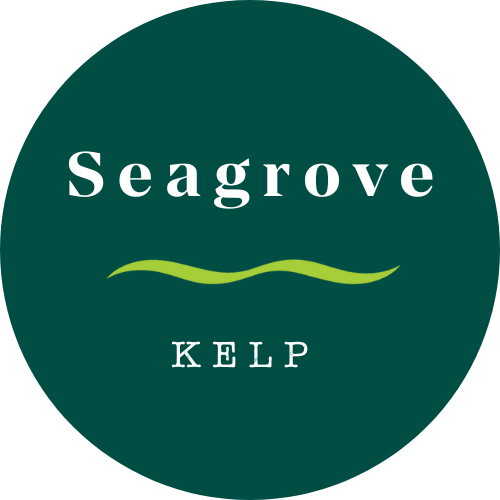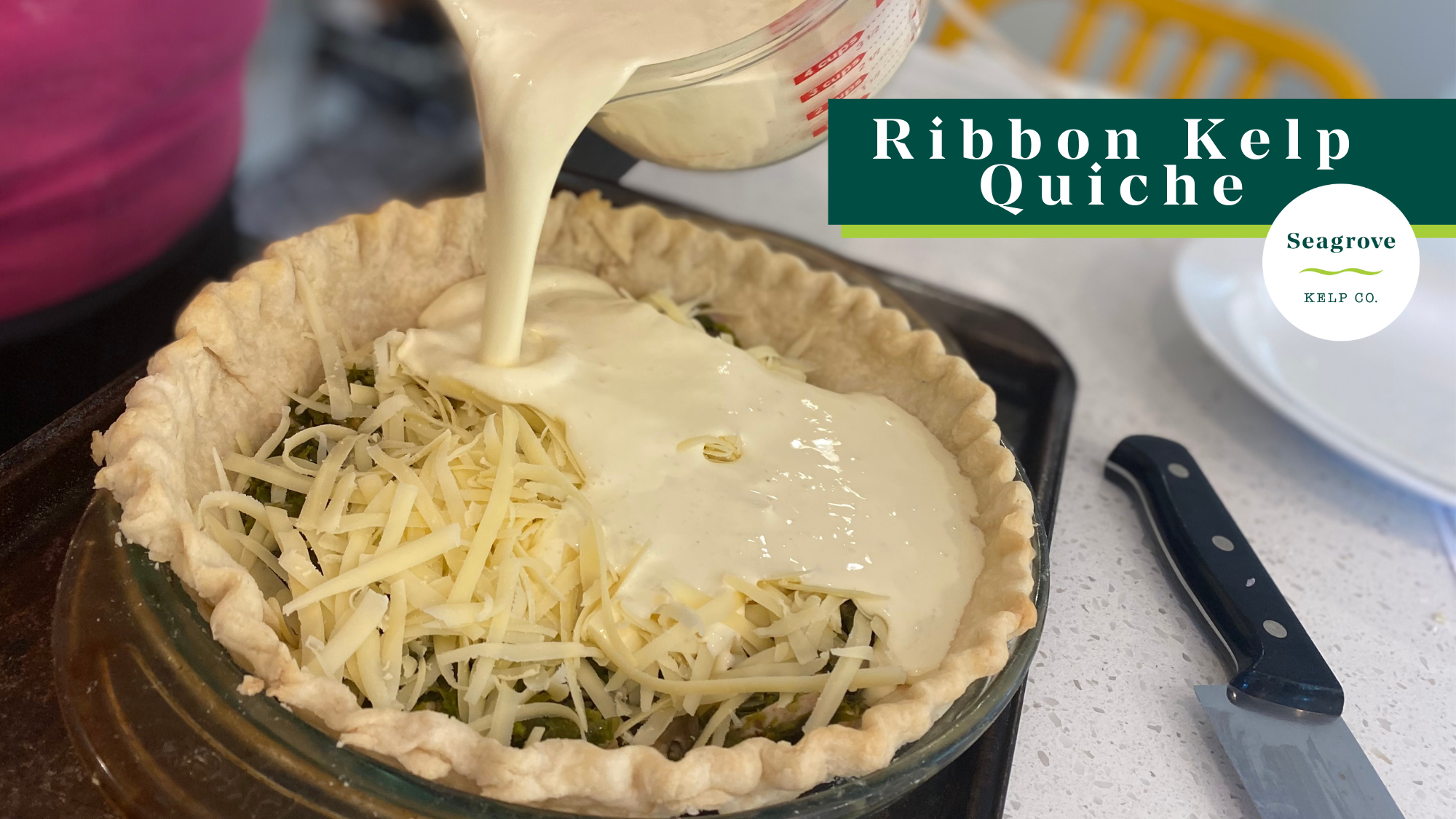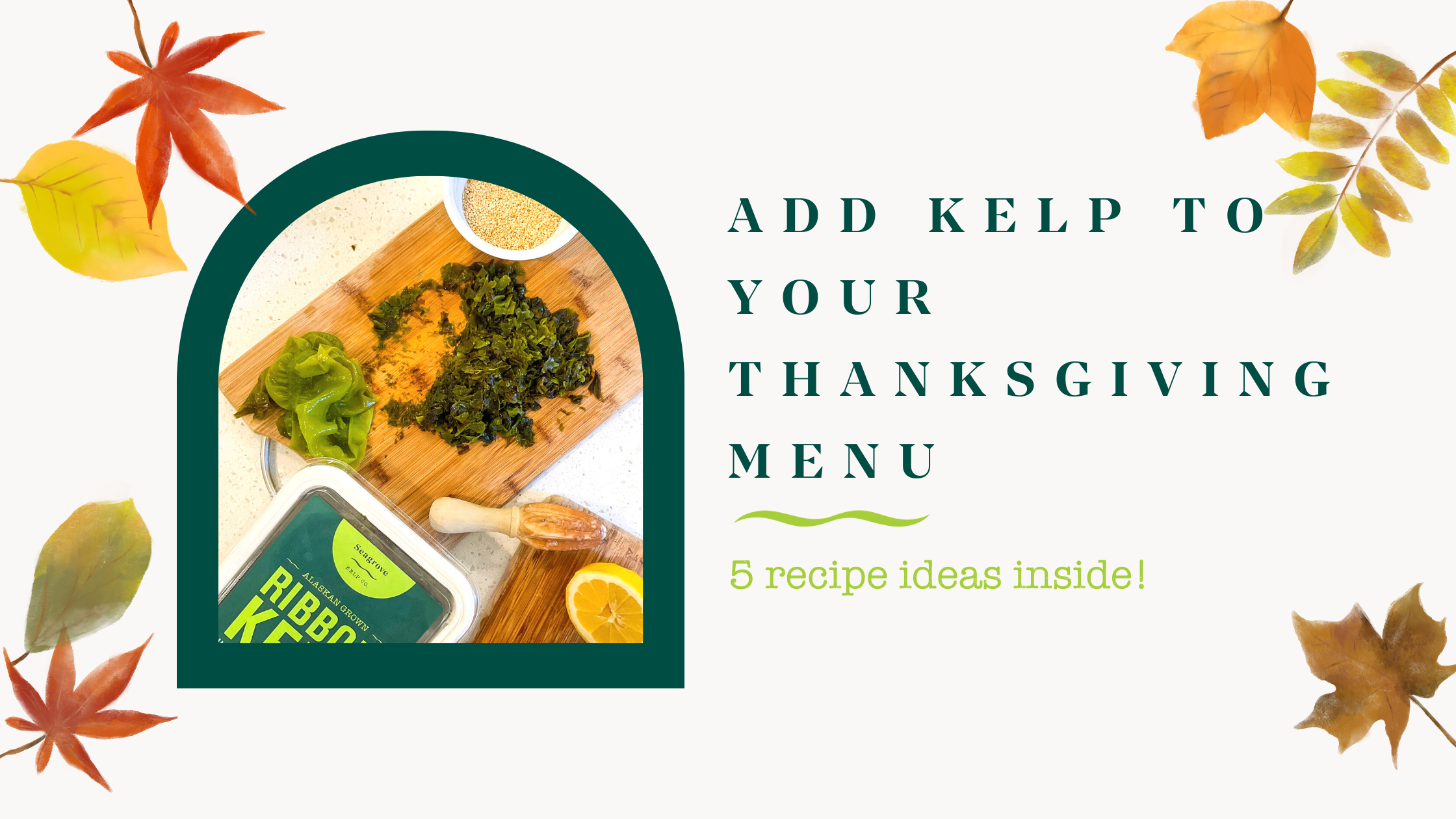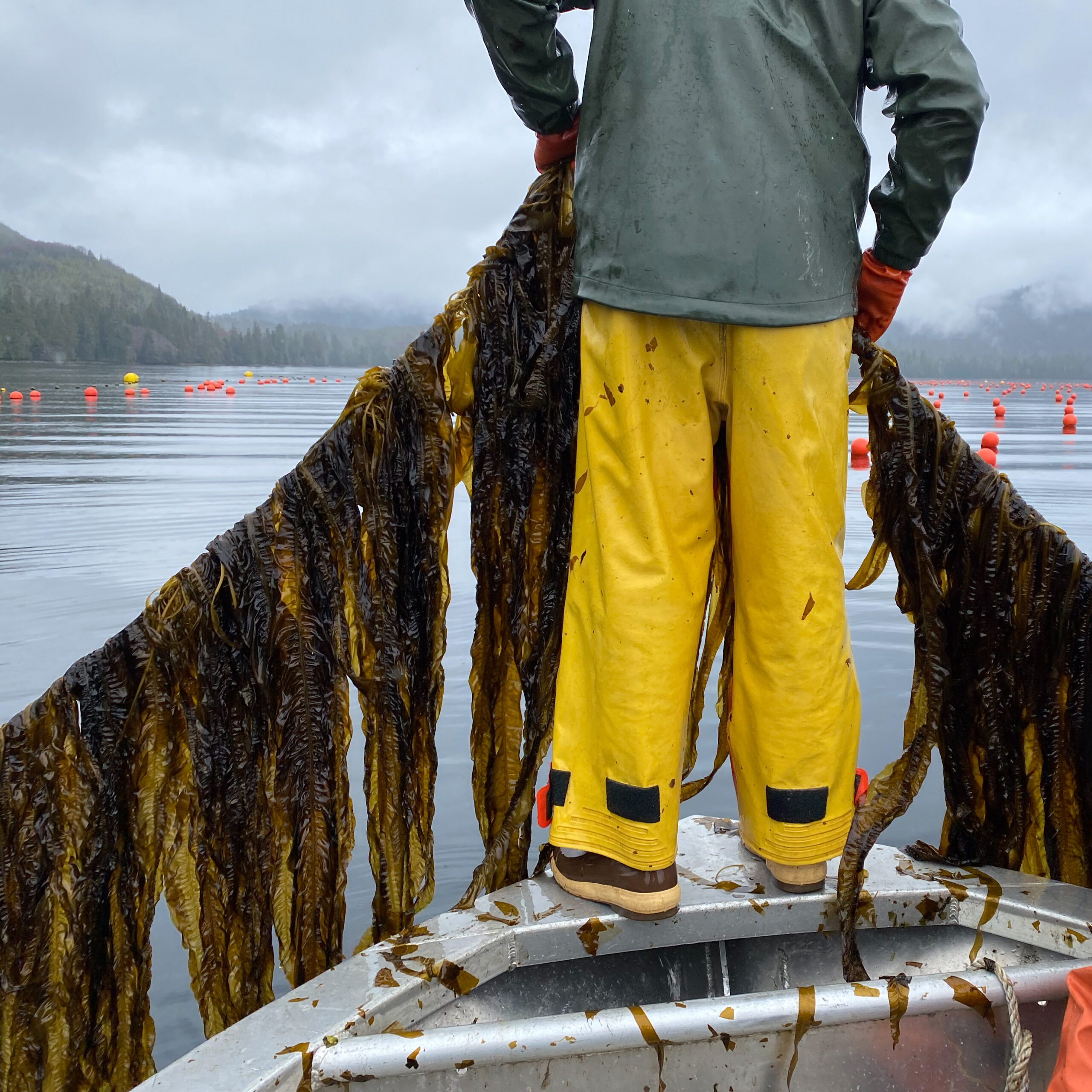The history of seaweed is vast and the potential uses are expanding daily. Take a look at our list of best books on the subject and pick out one that speaks to you to learn more about the wonderful world of seaweed. Whether you want to learn about where seaweed (and humans!) originate from or are just looking for some great kelp recipes, we have the book for you!
Beautiful illustrations & great information
The Curious World of Seaweed by Josie Iselin

“Marine algae are the supreme eco-engineers of life: they oxygenate the waters, create habitat for countless other organisms, and form the base of a food chain that keeps our planet unique in the universe as we know it. In this beautiful volume Josie Iselin explores both the artistic and the biological presence of sixteen seaweeds and kelps that live in the thin region where the Pacific Ocean converges with the North American continent―a place of incomparable richness. Each species receives a detailed description of its structure, ecological importance, and humans’ scientific inquiry into it, told in scientifically illuminating yet deeply reverent and inspired prose. Throughout the writings are historical botanical illustrations and Iselin’s signature, Marimekko-like portraits of each specimen that reveal their vibrant colors―whether rosy, ‘olivaceous,’ or grass-green―and whimsical shapes. Iselin posits that we can learn not only about the seaweeds but also from them: their resilience, their resourcefulness, their poetry and magic.”
Buy it here.
Seaweed, An Enchanting Miscellany by Miek Zwamborn
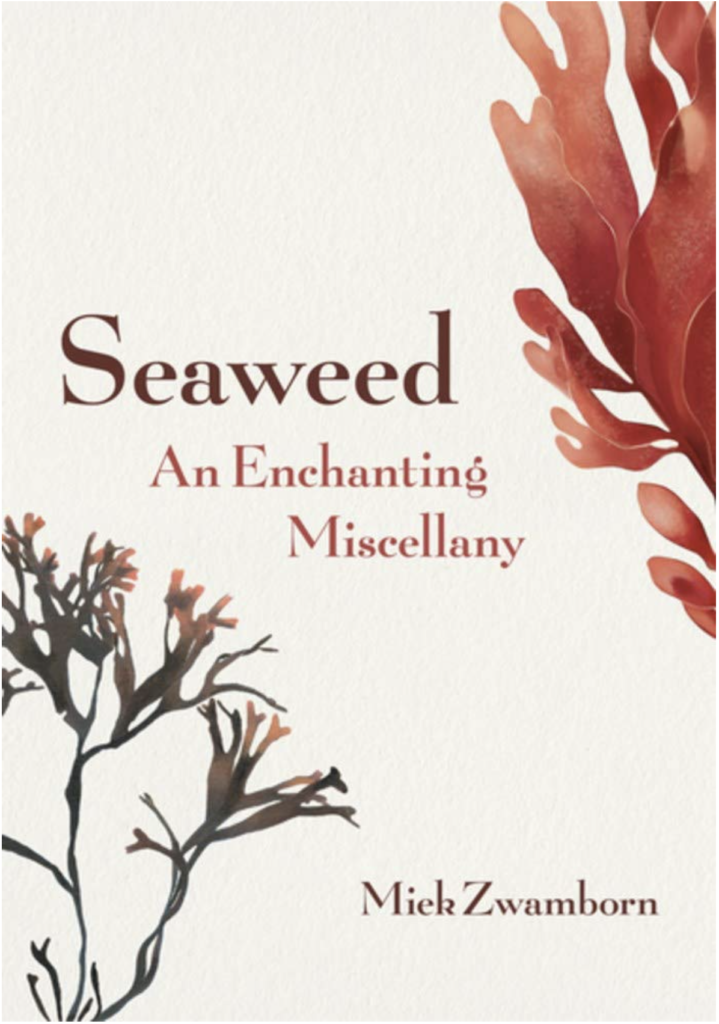
“A charming deep dive into the hidden world of seaweed, filled with fascinating facts and beautiful illustrations of the most sensuous family of water plants. Seaweed is so familiar, and yet we know so little about it. Even its names—pepper dulse, sea lettuce, bladderwrack—are mystifying.
In this exquisitely illustrated portrait, poet and artist Miek Zwamborn shares discoveries of seaweed’s history, culture, and science. We encounter its medicinal and gastronomic properties and long history of human use, from the Neolithic people of the Orkney islands to sushi artisans in modern Japan. We find seaweed troubling Columbus on his voyages across the Atlantic and intriguing Humboldt in the Sargasso Sea. We follow its inspiration for artists from Hokusai to Matisse, its collection by Victorians as pressed specimens in books, its adoption into fashion and dance, and its potential for combating climate change, as a sustainable food source and a means of reducing methane emissions in cattle. And, of course, we learn how to eat seaweed, through a fabulous series of recipes based around these ‘truffles of the seas.’”
Buy it here.
Pacific Seaweeds: A Guide to Common Seaweeds of the West Coast By Louis Druehl and Bridgette Clarkston

“This updated and expanded guide thoroughly documents every aspect of seaweed life, from species identification and seaweed biology to the essential–and often surprising–roles seaweed plays in the marine ecosystem and our everyday lives. Seaweeds are used in everything from cosmetics to sustainable biofuels, and some species, like kelp, contribute to the remediation of coastal ecosystems.
Featuring an attractive new full-colour design, the expanded Pacific Seaweeds includes updated species descriptions, dozens of additional colour photos, new species discovered since the original edition, and brand-new sections on common shore plants and the use of DNA techniques to discover, catalog and identify seaweeds. It also features several new recipes and an essay on umami–because in addition to all its other uses, some species of seaweed make delectable food.
Packed with illustrations, vivid colour photographs, comprehensive scientific information and further readings, this easy-to-use guidebook will appeal to marine biologists, amateur beachcombers, gourmet foragers and everyone in between.”
Buy it here.
Seaweeds: Edible, Available, and Sustainable by Ole G. Mouritsen

“Mouritsen takes readers on a comprehensive tour of seaweed, describing what seaweeds actually are (algae, not plants) and how people of different cultures have utilized them since prehistoric times for a whole array of purposes—as food and fodder, for the production of salt, in medicine and cosmetics, as fertilizer, in construction, and for a number of industrial end uses, to name just a few. He reveals the vast abundance of minerals, trace elements, proteins, vitamins, dietary fiber, and precious polyunsaturated fatty acids found in seaweeds, and provides instructions and recipes on how to prepare a variety of dishes that incorporate raw and processed seaweeds. Approaching the subject from not only a gastronomic but also a scientific point of view, Mouritsen sets out to examine the past and present uses of this sustainable resource, keeping in mind how it could be exploited for the future. Because seaweeds can be cultivated in large quantities in the ocean in highly sustainable ways, they are ideal for battling hunger and obesity alike.
With hundreds of delectable illustrations depicting the wealth of species, colors, and shapes of seaweed, Seaweeds: Edible, Available, and Sustainable makes a strong case for granting these ‘vegetables from the sea’ a prominent place in our kitchens.”
Buy it here.
Informative looks at the business of kelp
Seaweed Chronicles: A World at the Water’s Edge by Susan Hand Shetterly

“In Seaweed Chronicles, Shetterly takes readers deep into the world of this essential organism by providing an immersive, often poetic look at life on the rugged shores of her beloved Gulf of Maine, where the growth and harvesting of seaweed is becoming a major industry. While examining the life cycle of seaweed and its place in the environment, she tells the stories of the men and women who farm and harvest it—and who are fighting to protect this critical species against forces both natural and man-made. Ideal for readers of such books as The Hidden Life of Trees and How to Read Water, Seaweed Chronicles is a deeply informative look at a little understood and too often unappreciated part of our habitat.”
Buy it here.
Eat Like A Fish: My Adventures Farming the Ocean to Fight Climate Change by Bren Smith

“In the face of apocalyptic climate change, a former fisherman shares a bold and hopeful new vision for saving the planet: farming the ocean. Here Bren Smith—pioneer of regenerative ocean agriculture—introduces the world to a groundbreaking solution to the global climate crisis. A genre-defining ‘climate memoir’ Eat Like a Fish interweaves Smith’s own life—from sailing the high seas aboard commercial fishing trawlers to developing new forms of ocean farming to surfing the frontiers of the food movement—with actionable food policy and practical advice on ocean farming. Written with the humor and swagger of a fisherman telling a late-night tale, it is a powerful story of environmental renewal, and a must-read guide to saving our oceans, feeding the world, and—by creating new jobs up and down the coasts—putting working class Americans back to work.”
Buy it here.
Slime: How Algae Created Us, Plague Us, and Just Might Save Us by Ruth Kassinger

“Say ‘algae’ and most people think of pond scum. What they don’t know is that without algae, none of us would exist. There are as many algae on Earth as stars in the universe, and they have been essential to life on our planet for eons. Algae created the Earth we know today, with its oxygen-rich atmosphere, abundant oceans, and coral reefs. Crude oil is made of dead algae, and algae are the ancestors of all plants. Today, seaweed production is a multi-billion dollar industry, with algae hard at work to make your sushi, chocolate milk, beer, paint, toothpaste, shampoo and so much more.
In Slime we’ll meet the algae innovators working toward a sustainable future: from seaweed farmers in South Korea, to scientists using it to clean the dead zones in our waterways, to the entrepreneurs fighting to bring algae fuel and plastics to market. With a multitude of lively, surprising science and history, Ruth Kassinger takes readers on an around-the-world, behind-the-scenes, and into-the-kitchen tour. Whether you thought algae was just the gunk in your fish tank or you eat seaweed with your oatmeal, Slime will delight and amaze with its stories of the good, the bad, and the up-and-coming.”
Buy it here.
Seaweed cookbooks
Ocean Greens: Explore the World of Edible Seaweed and Sea Vegetables by Lisette Kreischer and Marcel Schuttelaar

“On the cutting edge of food and sustainability, seaweed and sea vegetables are good both for you and—with the potential to drastically reduce our carbon footprint—for the planet. Now, Ocean Greens is the all-in-one guide to the most kitchen-ready varieties of this remarkable superfood (overflowing with nutrients!)—wakame, kombu, agar, samphire, nori, and many others. Seaweed visionaries Lisette Kreischer (dubbed a ‘fitfluencer’ by Women’s Health) and Marcel Schuttelaar share insights on the nutrition, taste, and harvesting of each—as well as 50 irresistible vegan recipes that will have readers exclaiming, ‘I can’t believe it’s seaweed!’”
Buy it here.
The Seaweed Cookbook: A Guide to Edible Seaweeds and how to Cook with Them by Caroline Warwick-Evans

“Long known for its nutrient-packed versatility, seaweed is the latest must-have superfood, full of minerals and umami tastes. This beautiful new book provides a visual directory of the most popular edible seaweeds, with details of when and where they can be found, their uses and nutritional properties. Then there are 100 deliciously creative recipes from simple and wholesome dishes to chef-inspired specials. Often overlooked during rock pool scrambles and beach walks, seaweed is one of the most nutritious, versatile, sustainable and intriguing natural products. Increasing ranges of edible seaweed are available commercially, and this new book explores the different types as well as a fantastic collection of creative recipes to cook with them. Whether dried, rehydrated or eaten raw, treated as a vegetable, flaked and sprinkled as a seasoning, or munched as a crispy snack, seaweeds offer wide-ranging possibilities in many meals and drinks. With pictures by award-winning photographer David Griffen, there is plenty of inspiration to leave you eager to get foraging, cooking and feasting.”
Buy it here.
Superfood Seaweeds: A Guide to Cooking with Power-Packed Seaweed by Barton Seaver
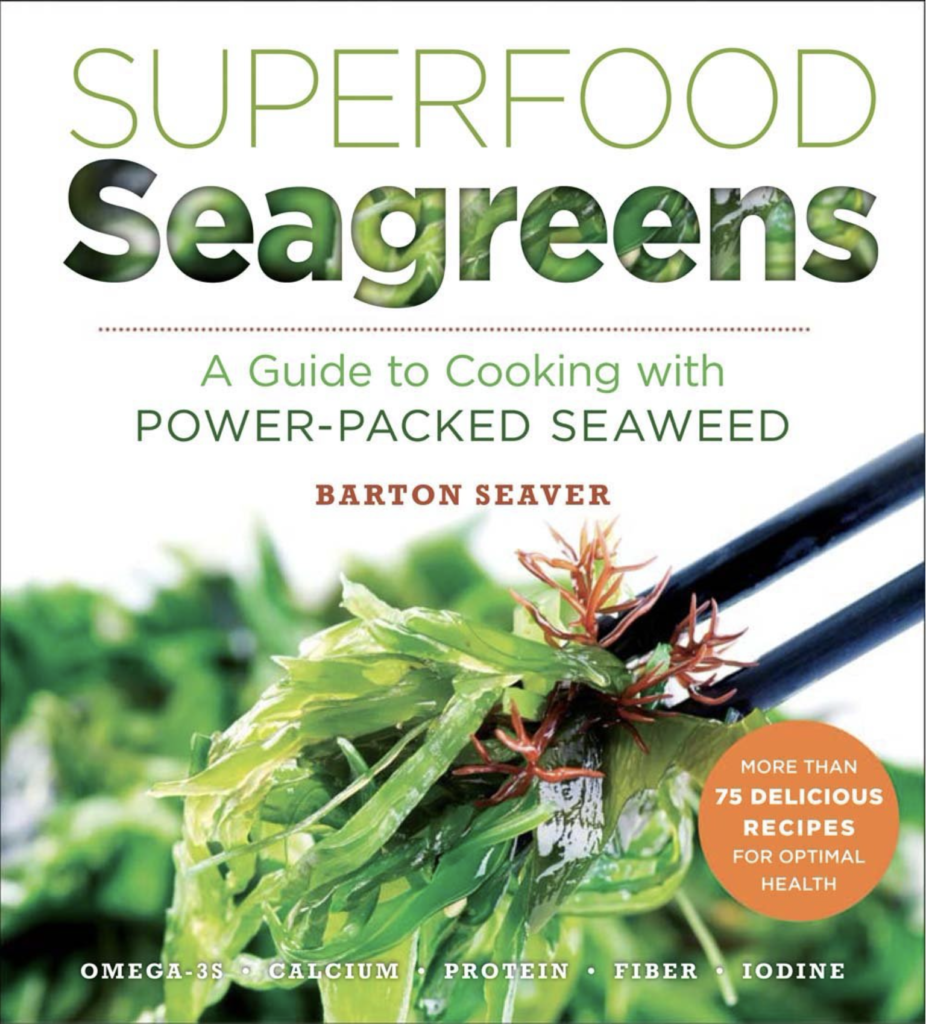
“With benefits ranging from weight loss and increased energy to overall good health, no wonder sea greens (such as kelp, dulse, wakame, and alaria) are poised to become the next superfood craze. Incorporate them into your daily diet—and substitute them for more familiar vegetables like kale, spinach, and okra—with the help of world-renowned chef and sustainability expert Barton Seaver. His more-than-75 versatile recipes include everything from smoothies and cocktails to exciting salads, delicious pasta dishes, savory stews and soups, even breakfast foods and desserts! This one-stop cookbook covers all the different types, explains their history and traditional uses, and offers suggestions on where to buy them.”
Buy it here.
